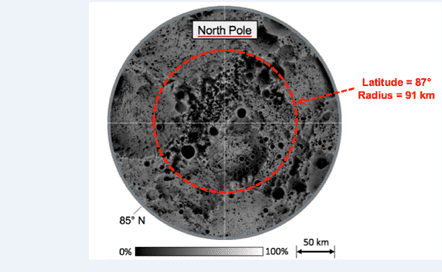Permanent bases on worlds beyond the Earth are going to need abundant electricity. Now that a renewed space race includes plans for Lunar bases in the near future, it’s time to think about how we can provide that at a price that won’t scuttle the project. Surprisingly, it seems battery storage for long lunar nights is not required.
Most of the methods we use to produce electricity on Earth aren’t options elsewhere. No other world in the Solar System offers native fossil fuels to mine and transporting them from Earth would be staggeringly expensive. Wind, wave, and hydropower are non-starters on the airless Moon, leaving only solar and nuclear.
With no clouds to block the sunlight, producing electricity from solar power on the Moon is easy, until night falls. But with almost 15 Earth days of darkness between sunset and sunrise, storing all the power is a major challenge. However, Professor Jeffrey Gordon of Ben-Gurion University not only thinks we don’t need any storage at all, but he’s run the numbers on an alternative solution in a study published in Renewable Energy and argues it is drastically cheaper.
It’s always sunny somewhere on the Moon. Therefore, Gordon suggests, we could place solar collectors in a ring around the planet and transmit the power to where it is required.
No doubt Gordon isn’t the first to come up with the idea, but at first glance, it sounds more expensive than vast banks of batteries. However, Gordon notes, there’s no need for the power lines to stretch for thousands of kilometers. Lunar bases are likely to be built near the poles, at least initially, to take advantage of the ice at the bottom of craters there.
The Moon has much less extreme seasons than the Earth since its axis is inclined at just 1.5° to the plane in which the pair orbit, rather than 23° as on Earth. Consequently, even quite close to a pole there is no long winter darkness. A ring of solar collectors could be placed only 3° away from the pole and produce electricity at all times.
With a radius of just 1,734 kilometers (1,077 miles), little more than 600 kilometers (373 miles) of cables would be required. With no animals or humans to electrocute themselves, the lines would also not need to be suspended from high towers, nor built for wind resistance. NIMBY resistance to powerlines crossing a property won’t be a problem either.

A hypothetical ring of solar collectors around the lunar North Pole at a good location to collect and transmit uninterrupted solar power. Image Credit: Ben Gurion University of the Negev
“My solution has a specific mass far below all alternatives so far, namely, record low kg/kW… [On this measure] our new strategy is more than a factor of 100 better than solar with battery storage,” Gordon said in a statement. The paper notes that long-term storage hasn’t been adopted on Earth, even without the transportation problems.
Nor is Gordon’s solution just a copout for those hostile to nuclear. “It is also at least a factor of 6 superior to the solution now being contemplated by NASA of nuclear reactors driving conventional turbines and generators,” he said.
Bases will need oxygen not just to breathe, but for propellant to return to Earth or venture on to Mars. Gordon estimates around 10 MW of continuous power will be needed to provide this, dwarfing the initial bases’ other needs.
An alternative way to do without storage on the Moon would be to place solar panels on satellites and have them beam the power to the Moon. Such a scheme would benefit from advances in wireless energy transmission if proposals to use a similar approach to power the Earth come to fruition. Until those have been demonstrated, however, Gordon’s idea has the advantage of combining already proven technologies.
The work has been published in Renewable Energy.
Source Link: There’s A Surprisingly Affordable Way To Power Lunar Bases Without Storage